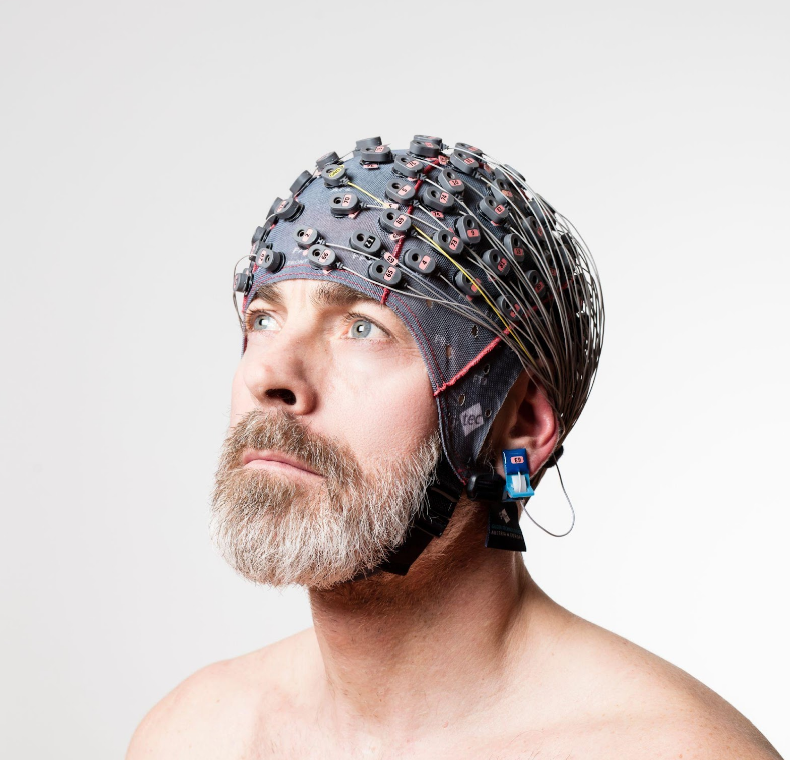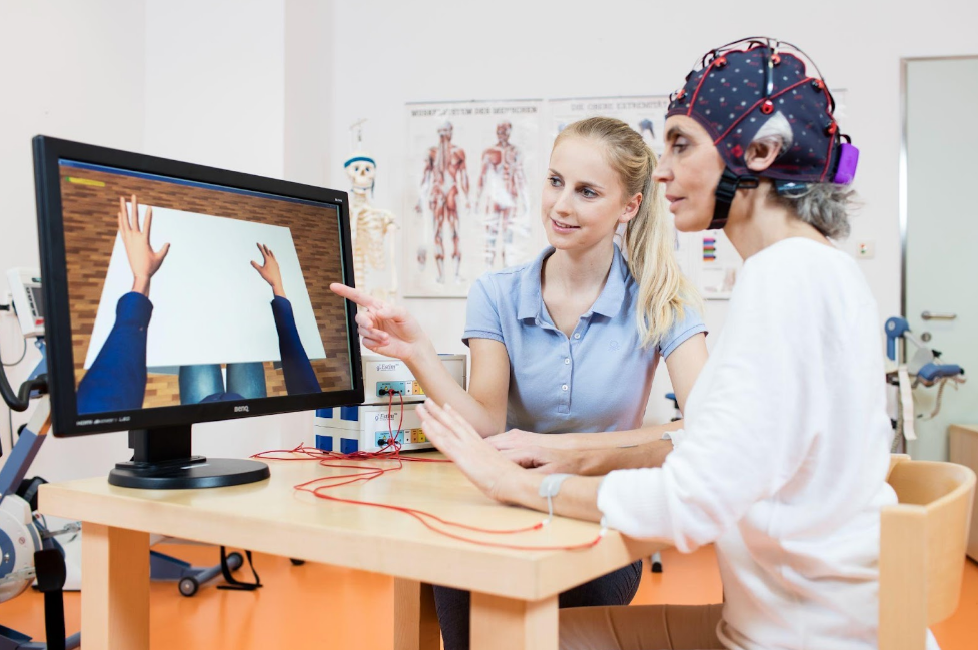g.tec’s innovative recoveriX brain-computer interface treatment aids stroke and multiple sclerosis patients
BRANDVOICE

Source: g.tec
Neurological conditions such as stroke and multiple sclerosis (MS) can have severe and far-reaching effects on patients, including paralysis and speech impairment, that severely limit their quality of life. Most treatments for multiple sclerosis are often intended to slow down the disease’s progression, which can leave patients unable to walk and confined to a wheelchair. With regard to stroke, many physicians say that improvements in the patient’s condition beyond one year from the onset are rare.
However, hope remains for stroke and MS patients, as Austria-based medical engineering firm, g.tec has developed recoveriX, a treatment that uses brain-computer interface technology to train the upper or lower limbs of patients with impairments caused by neurological conditions. The company has been working on this technology since 2014.
According to Dr. Christoph Guger, co-founder and CEO of g.tec, recoveriX has been proven to aid stroke patients, with significant improvements in terms of locomotion, gait, balance, and movement control. As reported in the clinical test, recoveriX still has a significant positive effect on patients with an average of 3.8 years since the stroke occurred. Improvements were noted even in patients who had a stroke up to 30 years prior, and that the patient’s age had no bearing on the treatment’s efficacy.
recoveriX has made a profound impact on people’s lives. In one case, Dr. Guger encountered a stroke patient who spent several years stuck motionless in a wheelchair, unable to speak or respond to other people. Having undergone 53 recoveriX therapy sessions, he was able to walk a few steps inside the therapy center. By session 100, he was able to walk from the parking lot into the therapy room.
Another patient, a hairdresser in her late 30s suffered a stroke, leaving her unable to work. She began recoveriX therapy 14 months later and it took only 4 sessions for her to see an effect, and, after 25 sessions, she was able to work again and reopen her hairdressing salon.
“A big difference for patients is that recoveriX makes them better, and it doesn’t just slow down their decline, as other treatments do. recoveriX helps treat spasticity, leading to better locomotion, concentration, memory, and bladder control. We also found that it improves speech by relieving the affected facial muscles, allowing patients to speak clearer and louder, leading to improved social contact and inclusion,” says Dr. Guger.

Source: g.tec
In order for recoveriX to work, the patient has to take the time to participate in roughly 20 hours of sessions. They begin their treatment by imagining moving their hand or foot, while recoveriX measures and analyzes their brain waves through an EEG headset. recoveriX works by pairing mental activities (specifically, the visualization of movement) with visual and tactile feedback in real time: As they imagine the movement of their hands or legs, recoveriX measures and analyzes their brain waves through the EEG headset. If the subject correctly focuses on the movement, the corresponding limb of an avatar on the monitor moves, and the system electrically stimulates the limb through electrodes, causing a real movement. Through 6,000 repetitions of this process for stroke patients, and 8,000 for MS patients, the inherent neuroplasticity of our brains, and joining these activities together, new neurological links begin to form connections, enabling patients to regain the use of their limbs. This practice is equivalent to a child learning to walk.
Dr. Guger has observed significant improvements in speech ability for his stroke and MS patients, with those who previously struggled to say a single word eventually being able to say multiple words and even complete sentences. They may also see improvements in fine and gross motoric skills and begin using the hand they previously could not, while their families often mention to Dr. Guger the difference the treatment has made, allowing them to connect more deeply with them.
Just in time for World Multiple Sclerosis day on May 30, another study on MS will soon be released by Dr. Guger, which reports even better results than the previous clinical trial for stroke patients. “After using recoveriX, MS patients can walk faster, better, and have better coordination – all the same developments we’ve observed in stroke patients, but better. While a stroke can destroy a large cortical network, lesions in the brain caused by MS are smaller, which could be why the treatment is more effective,” says Dr. Guger.
g.tec plans to expand their reach to patients by licensing the recoveriX technology to hospitals, clinics, and rehabilitation centers, and it also provides training for the staff – including physical and occupational therapists, doctors, and nurses – as well as marketing materials and other business needs. It is also possible for medical professionals to establish one or multiple clinics to cover a whole region or state. The recoveriX treatment is currently offered in 14 countries: Austria, Canada, Finland, Germany, Hong Kong, Mexico, the Netherlands, Nigeria, Portugal, Slovenia, Spain, Croatia, Israel, and Thailand. It is a competitive alternative to current commonly used medications (for MS and stroke patients) as it offers them the possibility of improving their health, rather than the prevention of further decline.
“Unlike medication, recoveriX does not have any negative side effects, because it uses only small sensors to measure the brain and small and harmless currents to stimulate the muscles, and it’s long-lasting. In the case of MS, if patients get treatment it often allows them to walk without a stick. Following therapy, patients emerge with a healthier brain, and it gives them a lot of hope. Having improved mobility and more control over their body, they begin feeling better and it has a huge positive effect on their lives,” Dr. Guger says.